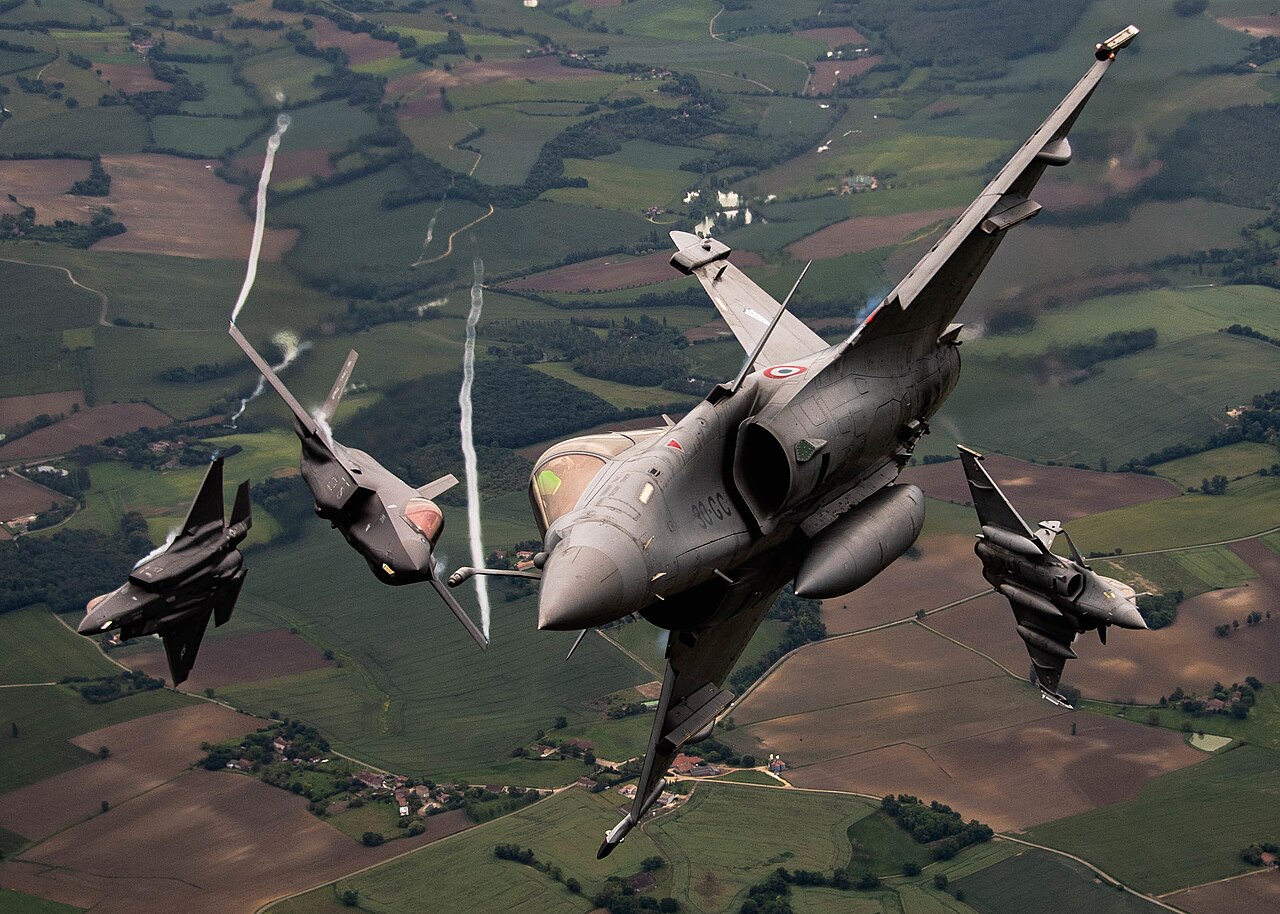French Rafale Outclasses American F-35 in Simulated Close-Range Dogfight Drill Highlights Agility

French Rafale Triumphs Over American F-35 in Simulated Close-Range Combat at Atlantic Trident Exercises
During a recent multinational training operation held in Finland, a significant event unfolded in aerial combat simulation: a French fighter successfully neutralized an American stealth jet in a close-quarters engagement. The scenario underscored distinct tactical advantages rooted in each platform’s design philosophy and operational doctrine.
The French aircraft demonstrated superior agility and adaptability in visually intensive dogfight conditions. This prowess stems largely from its design priorities, which emphasize maneuverability and versatility across a broad spectrum of combat scenarios. In contrast, the American stealth jet is engineered primarily for covert approaches and precision strikes at extended ranges, relying on cutting-edge stealth technology and sensor fusion to reduce detection and engage targets before visual contact.
These simulated encounters reflect evolving aerial warfare strategies, where pilots operating highly advanced machines are trained to minimize close-range visual confrontations, instead leveraging radar, electronic warfare, and networked intelligence to seize advantages at greater distances.
Distinct Design Philosophies Shaping Combat Roles
The French fighter’s agility roots in an emphasis on aerodynamic performance, twin-engine resilience, and a multifunctional weapons suite that allows it to adapt fluidly between air superiority, ground attack, and reconnaissance roles. This adaptability makes it particularly effective in situations requiring rapid directional changes and close-range dogfighting skills, where quick reflexes and aircraft responsiveness are paramount.
Conversely, the American stealth platform integrates a fifth-generation design ethos: minimizing radar signature, employing advanced materials and shaping, and incorporating high levels of sensor integration. These factors facilitate penetrating hostile airspace undetected, gathering and fusing battlefield data in real-time, and striking targets with precision from beyond visually identifiable range.
While this stealth fighter boasts advanced avionics and multirole capabilities, its strategic doctrine advises pilots to avoid maneuvering into visual engagements—where its relatively larger turn radius and single-engine configuration present limitations compared to more agile, twin-engine rivals.
Training Adaptations Reflecting Future Air Combat
The nature of contemporary air combat is shifting away from traditional dogfights toward beyond-visual-range confrontations supported by sensor networks, electronic warfare systems, and satellite communications. This necessitates that pilots master a spectrum of tactics focused on information dominance and situational awareness rather than close-in fight endurance.
The latest training regimens undertaken by fighter pilots emphasize avoiding direct visual contact, instead prioritizing target acquisition through electronic means and engaging at distances that keep the aircraft out of enemy missile envelopes. These tactics are reflective of the capabilities and intended roles of their respective platforms—with one excelling in stealthy long-distance strike missions and the other maintaining its edge in maneuverability and tactical flexibility.
Simulated exercises like those in Finland serve as critical proving grounds to assess how these design philosophies translate into operational effectiveness and to refine pilot training so that each platform’s strengths are maximized within coalition operations.
Implications and Insights from the Simulation Outcome
The result of this mock engagement provides valuable insights into the complex trade-offs between stealth technology and aerodynamic agility. It highlights that even advanced stealth platforms may face challenges when forced into close-range encounters where maneuverability—and pilot skill—become decisive factors.
Such exercises reaffirm the importance of maintaining diverse capabilities within allied air forces, ensuring a balance between stealth-oriented aircraft optimized for initial strikes and reconnaissance, and versatile jets tailored for dynamic, multi-role engagements. Integrating these capabilities enhances overall air superiority and operational resilience in complex combat theaters.
Ultimately, the simulated outcome emphasizes that no single platform is universally dominant; rather, success in modern aerial warfare depends on leveraging technical strengths contextually within coordinated operational tactics and evolving training paradigms.
